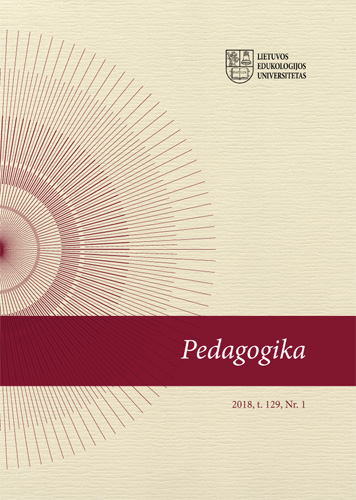Verbalinės ir vizualios informacijos pritaikymas kurtiesiems mokiniams sprendžiant tekstinius uždavinius III klasėje
The Employment of Verbal and Visual Information for 3rd Grade Deaf Students in Arithmetic Story Problem Solving
Author(s): Vaiva Grabauskienė, Ada ZabulionytėSubject(s): Education, School education, Methodology and research technology, Health and medicine and law, Inclusive Education / Inclusion
Published by: Vytauto Didžiojo Universitetas
Keywords: deaf children; mathematical reading comprehension; arithmetic story problem solving; Lithuanian Sign Language; primary school;
Summary/Abstract: The scientific studies have shown that deaf students in comparison to their hearing peers find mathematical word tasks much more difficult to solve. Following this finding, in our article we are discussing how Lithuanian oral/written and Sign languages (LSL) supported by illustrations might assist deaf students solving mathematical word problems. The analytical part of this article is based on results from a small field survey – deaf students were asked to take math word problems followed by discussions with the same students (performed in LSL) about their (un)success. The following methods have been applied: instrumental case study, written survey, observation, and qualitative content analysis. Due to the specifics of schools for deaf children we have chosen a small sample group consisting of six deaf 3rd grade students. Study results show that it was quite difficult for deaf students to understand what exactly the mathematical word problem has been asking for. This observation leads to the assumption that it would be useful making wording of math problems shorter and at the same time more friendly to the mindset of the deaf students. On top of that, the wording and written language constructions used in mathematical word tasks should be at the level of overall language comprehension of deaf students at that age level. This approach would lead to more rational teaching strategies to be used for deaf students - enabling them to recognize the key message in the task by separating it from the less important secondary information. The results also show that deaf students very rarely use illustrations as a supporting tool while resolving mathematical word tasks (though it might be some exceptions if students are asked to solve tasks that are more complex). This observation supports the idea, that it would be useful to apply proper illustrations helping to enhance the understanding and strengthen the ability to overcome the low comprehension of verbal information. In that case, the key objective in teaching deaf students would be in how to extract the required mathematical information from the illustrations presented and connect it with the word task itself. It has been noticed also that deaf students usually ask for help and support in Lithuanian Sign language. This underlines the importance of having the teacher able to communicate in their preferable way (using LSL) on a constant basis.
Journal: Pedagogika
- Issue Year: 129/2018
- Issue No: 1
- Page Range: 171-186
- Page Count: 16
- Language: Lithuanian

